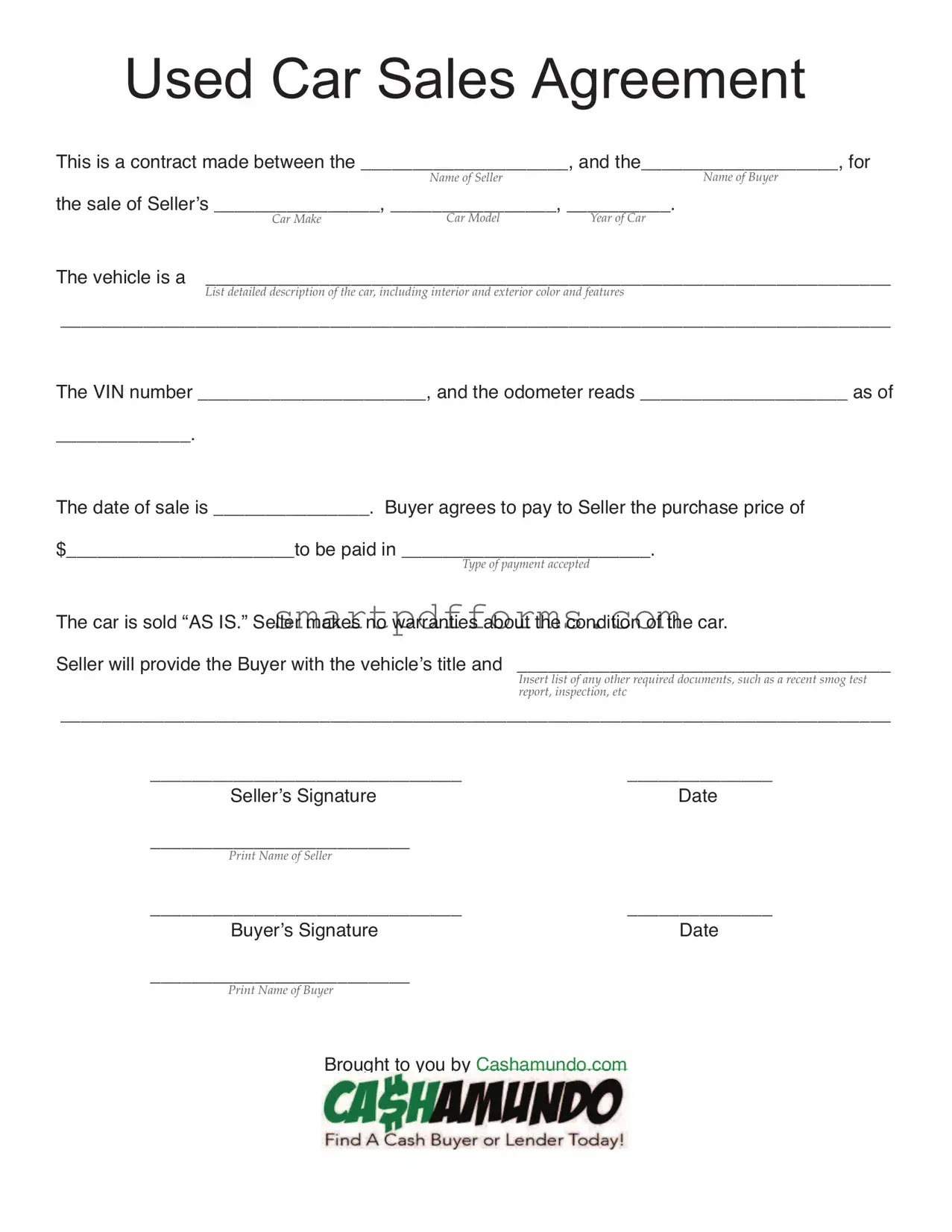Blank Used Car Agreement PDF Template
The Used Car Agreement form serves as a legally binding document that outlines the terms and conditions of the sale and purchase of a used vehicle between a seller and a buyer. It clearly specifies the details of the vehicle being sold, including make, model, year, and condition, along with the agreed-upon sale price and the date of sale. To ensure a smooth transfer of ownership, the form also details the required documentation for the transaction. Click the button below to start filling out your Used Car Agreement form.
Make This Document Now

